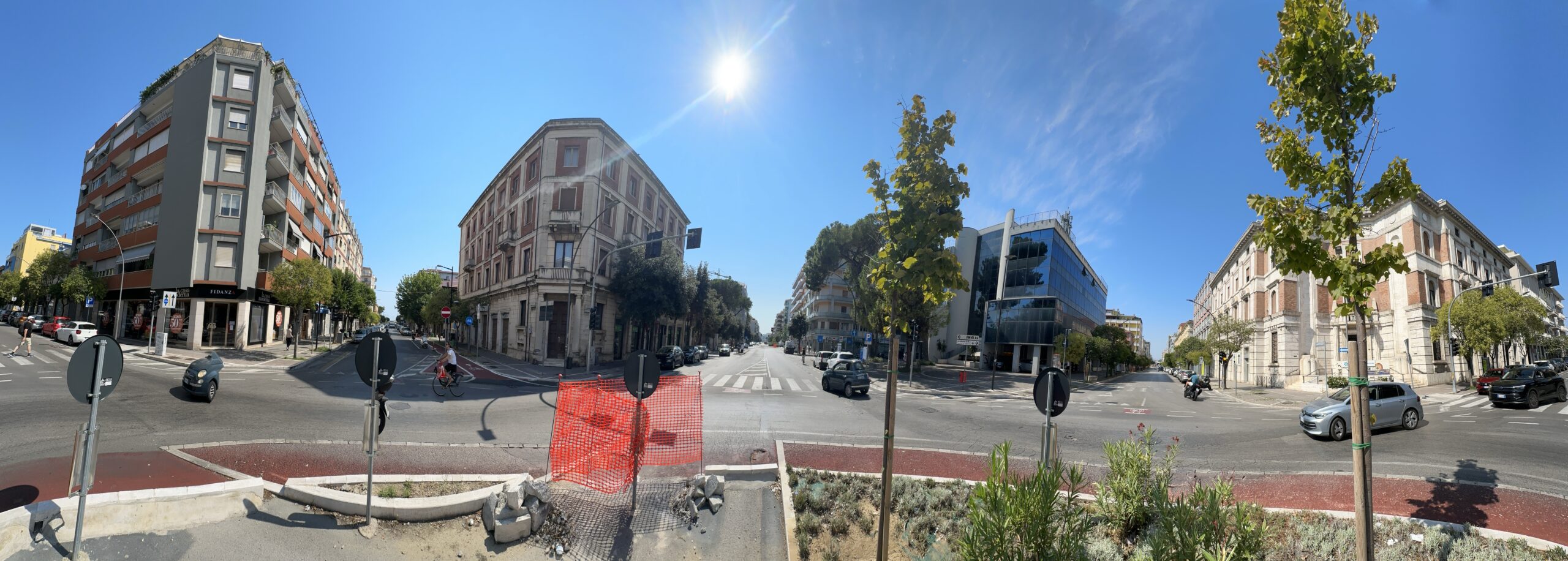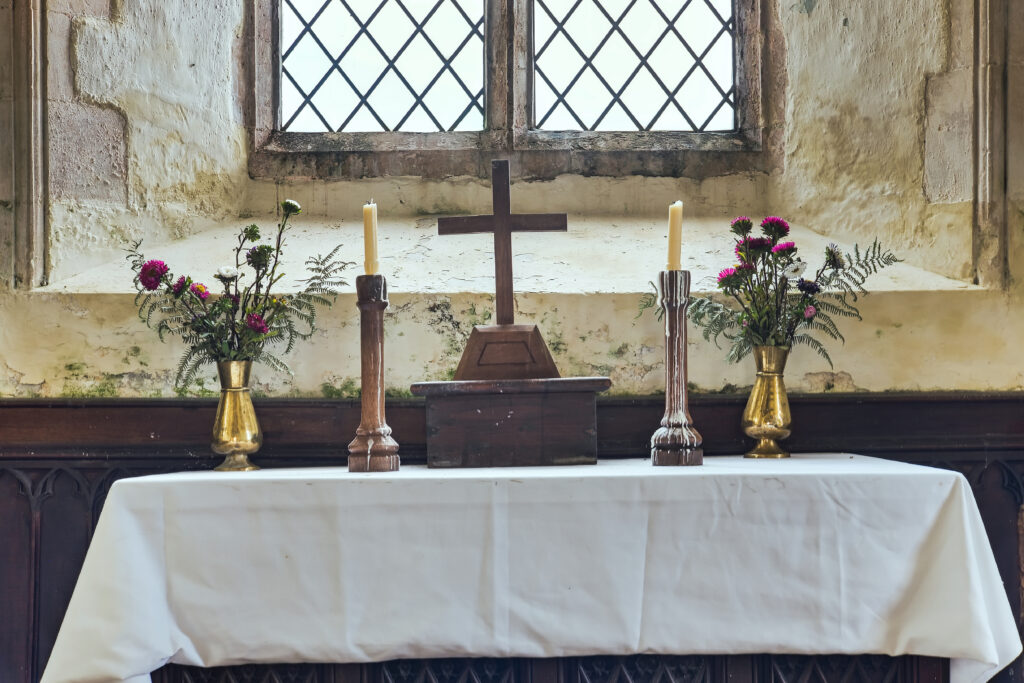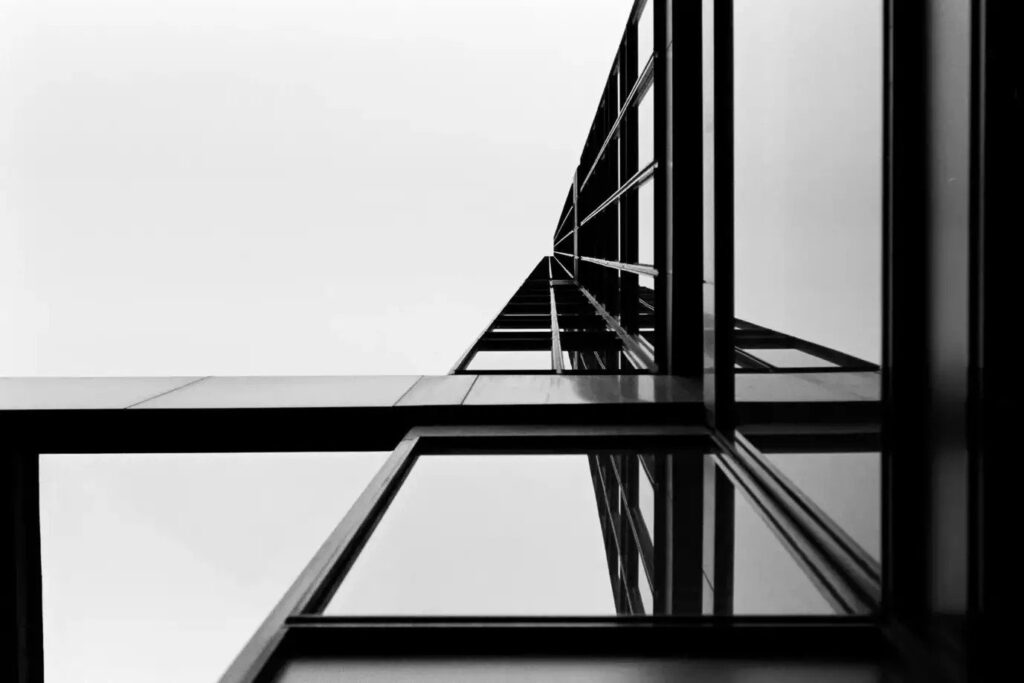This panoramic photo, taken with an iPhone, shows the four corners of a square in my hometown. As such, the photo has no particular merit or quality that justifies its public release. However, it is historically and culturally significant, as it shows how architecture marks the passing of time and the persistence of stupidity.
The oldest buildings (the second and the fourth) are similar in appearance. Dating from the early 20th century, they give an idea of the town’s original character. One is still privately owned and the other houses the local chamber of commerce.
Then came the second wave: the building on the far left in the style of the 1970s replaced the original façade. This was the first step in changing the identity of this crossroads (and indeed the whole town).
The third building from the left is the final phase of this identity distortion: a glass-and-steel box built with modern cities in mind. It is not the worst piece of architecture conceivable, but it is clearly out of context.
And here’s the catch: the inability to preserve this place’s original architecture led to its complete loss of identity. However, this crossroads acquired symbolic value for the very same reason: a testament to the ignorance of those in power locally.
Unless they booked the wrong Ryanair flight thinking it was headed to Rome, I don’t think anyone would be interested in spending time here. But just in case, it’s worth visiting this open-air exhibition of the power of stupidity.
Share this post:









Comments
Gioacchino Artesiano Pagliuca on A Travel Through Time, Stupidity and Power
Comment posted: 17/09/2025
Ibraar Hussain on A Travel Through Time, Stupidity and Power
Comment posted: 17/09/2025
JA on A Travel Through Time, Stupidity and Power
Comment posted: 17/09/2025
Michael Keppler on A Travel Through Time, Stupidity and Power
Comment posted: 17/09/2025
Architecture always reflects the era in which it was created. The building on the left, which originated in a democratic Italy, may not be considered beautiful, but it certainly offers very practical flats that are designed to meet human needs. Perhaps even better than supposedly more beautiful older buildings from a time when only a privileged few were allowed to live in dignified conditions. Of course, the architecture of recent decades has left behind many architectural eyesores, but to accuse administrative staff, who in a democratic and capitalist society may have only limited influence, of stupidity across the board, goes too far for me and does not correspond to my experience.
Many old buildings that we consider beautiful today were highly controversial at the time of their construction. And sometimes we humans make mistakes that we have to correct later.
Other times, all it takes is openness and curiosity to discover beauty in the seemingly ugly. For a photographer, that could also be an exciting challenge
Comment posted: 17/09/2025
Comment posted: 17/09/2025
David Hume on A Travel Through Time, Stupidity and Power
Comment posted: 18/09/2025
Unfortunate, because it lacks encouragement for us to think more deeply about the sociological and technical developments that shaped these changes.
Ironic, because there are surely more factors at play than power and stupidity. By making a sweeping pronouncement without considering those factors, Andrea risks falling into the very trap he criticises: acting on a strong opinion without room for other viewpoints.
But that’s not really what prompted me to write. What struck me was Andrea’s comment: “As such, the photo has no particular merit or quality that justifies its public release. However, it is historically and culturally significant, as it shows how architecture marks the passing of time …” (and I’d leave off the bit about stupidity).
That, to me, is interesting. It raises the possibility that a photograph could be made that presents this situation in a visually engaging way. One that shows the juxtapositions and invites the viewer to consider the changes, form an opinion, enter a discussion.
The thought I had was, "Hmm - four styles on four corners of a square; that's a neat opportunity...how would you make a photograph that actually says all that?" I agree the pano shot doesn’t really do it. But perhaps it’s a subject worth further thought?
Comment posted: 18/09/2025
Tony Warren on A Travel Through Time, Stupidity and Power
Comment posted: 18/09/2025
Michael Jardine on A Travel Through Time, Stupidity and Power
Comment posted: 18/09/2025
There was a wonderful Italian thinker and architect called Aldo Rossi who alas is remembered to an extent with mockery as associated with a stylistic direction that hasn't aged all that well- his writing on precisely these matters of urbanism and heirarchy would I think address the issues of this place, and Andrea wouldn't have to read them in English translation like I did!
Gary Smith on A Travel Through Time, Stupidity and Power
Comment posted: 19/09/2025
Scott Gitlin on A Travel Through Time, Stupidity and Power
Comment posted: 11/11/2025